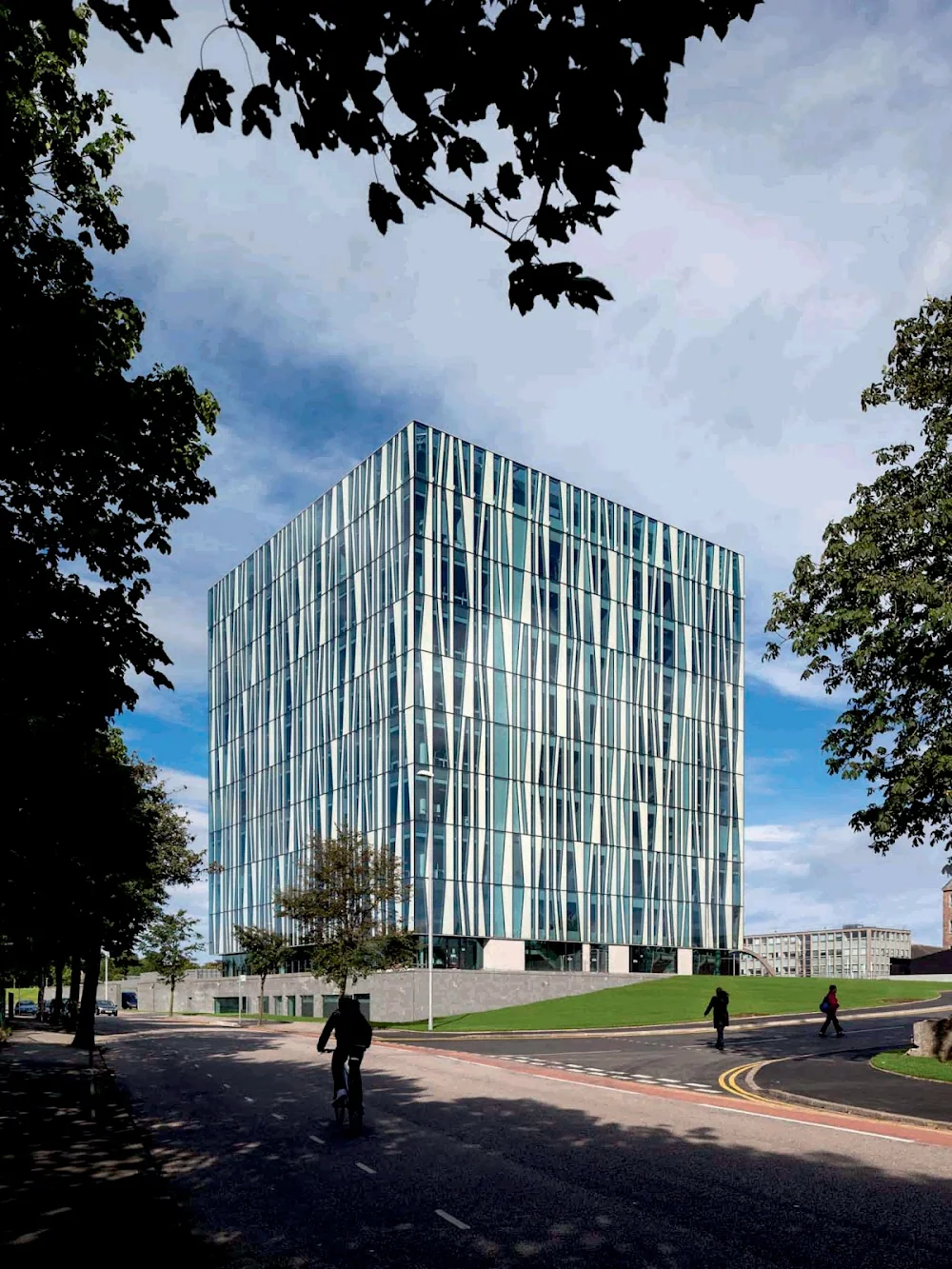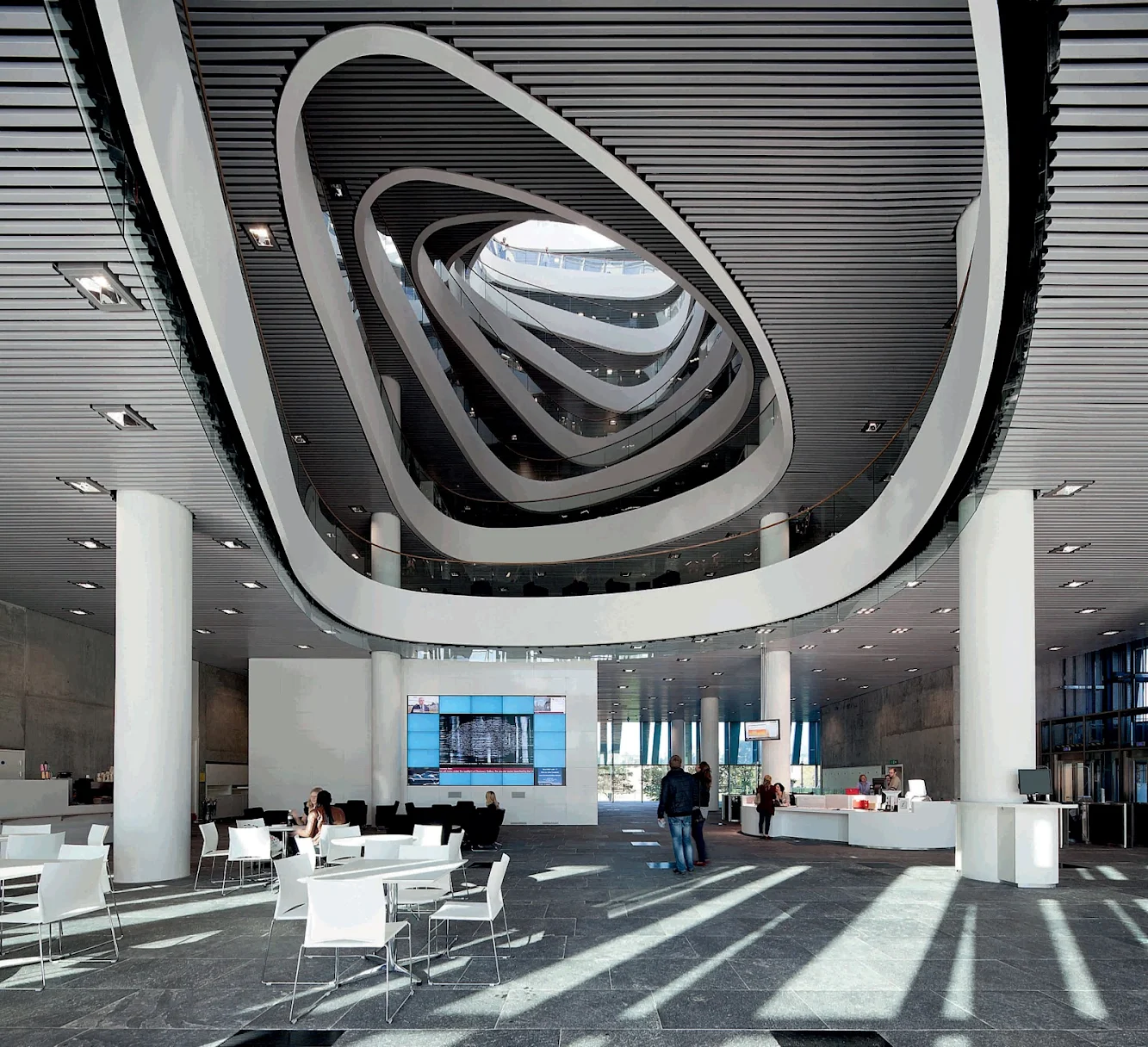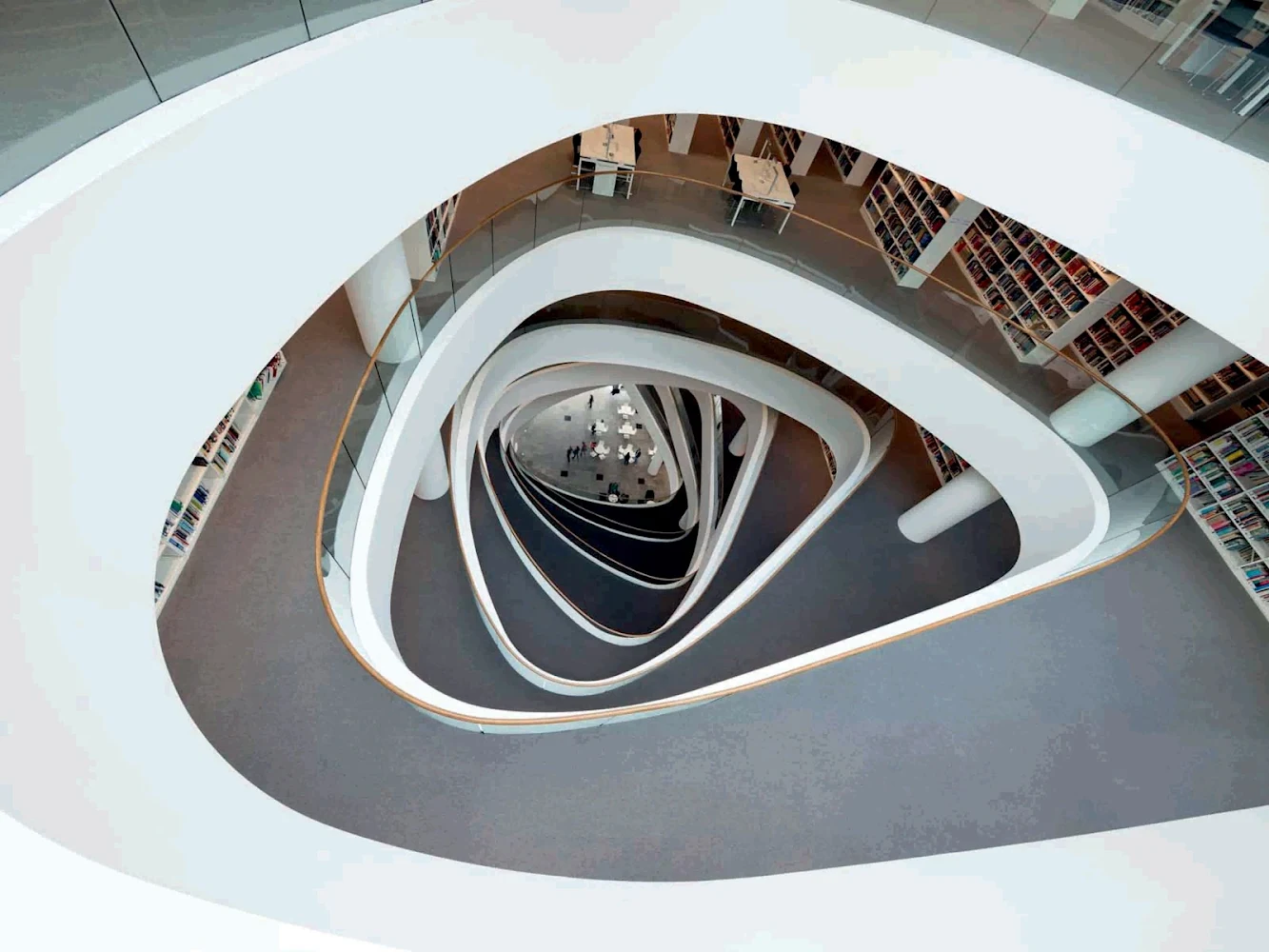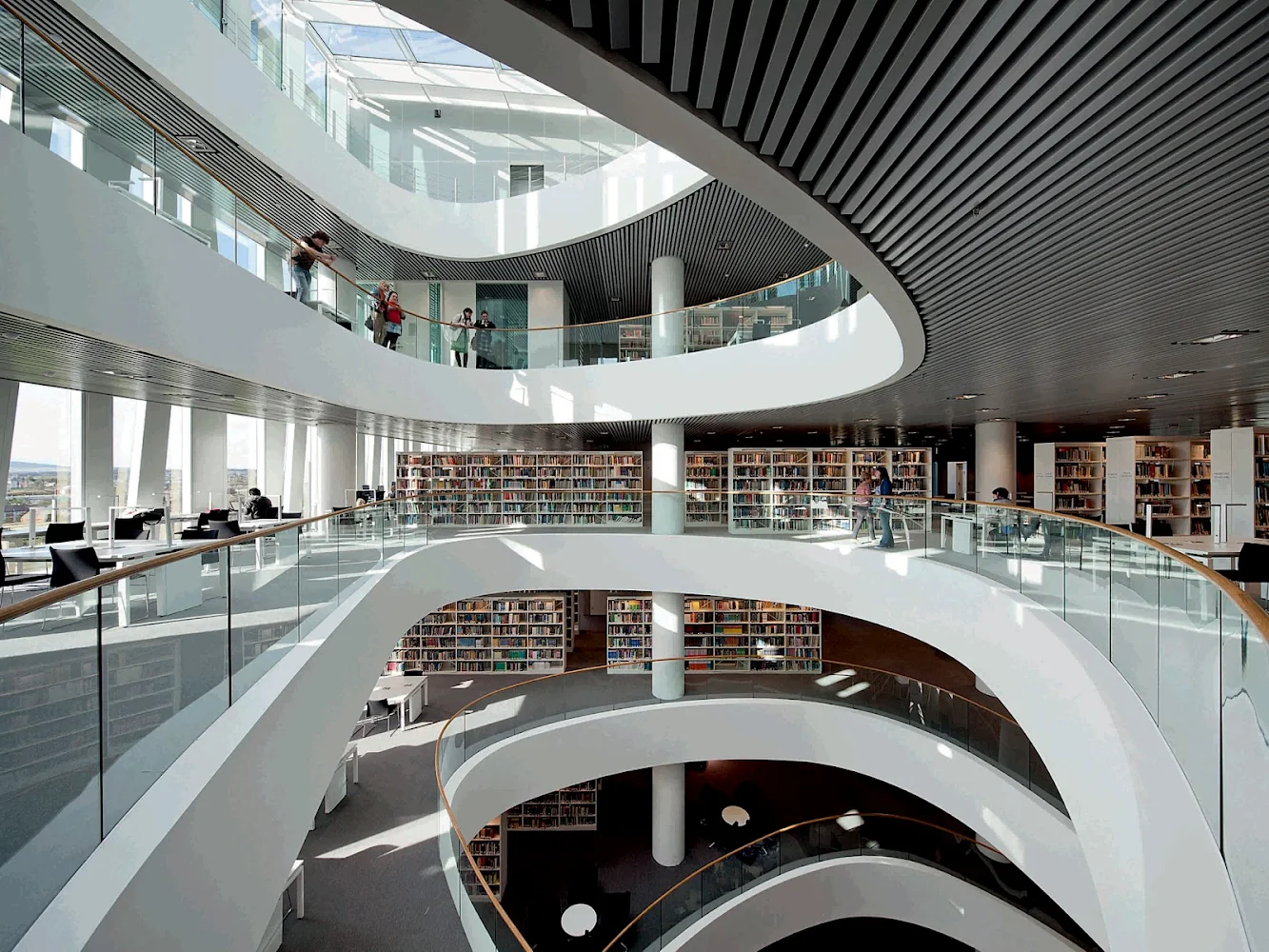
“ the University of Aberdeen is the fifth oldest English-language university in the world. It was established in 1495 and it houses over a quarter of a million books and manuscripts.

The new library serves a community of 14,000 students. the 15,500 square metres of floor-space accommodates 1,200 reading spaces alongside archives, historical collections and a rare books reading room.

A new public square is an integral part of the design, linking the University and the city and forming the west end of an east-west axis across the University campus. the Academic Square will generate a sense of cohesion between the University and the surrounding community.

The library will be positioned on a base of Scottish stone, and it is designed to be welcoming. the ground floor with lounge and café areas will host regular exhibitions, seminars and poetry readings.

The atrium’s vast spiralling volume connects all eight storeys, and with its sweeping contours and organic form, this space contrasts with the clean cut exterior profile.

The building is designed to minimise long term running costs and energy use. Consisting of an irregular pattern of insulated panels and high performance glazing, the façade will shimmer during the day and glow softly at night, creating a luminous landmark for Aberdeen.

Aberdeen University New Library will be both a meeting place and a cultural centre for the University and the wider Aberdeen community. Energy Photo voltaic cells are to be located on the roof and will supplement the building’s electricity requirements. Water A water recycling system will be utilised to collect and store rainfall from the roof. the rain water will be recycled for use in lavatories. Ventilation A green displacement ventilation system will be used to save energy. For example, the system supplies air at 18-19° C, thus obviating the need for mechanical cooling for a significant period of the year, that is, whenever external temperatures are less than 17-18° C.System pressure drops are much lower than in conventional fan coil unit systems, and this permits the use of far smaller fans to circulate air through the system. Temperature stratification allows for the conditioning of the occupied zone only, and in this way energy is not wasted in conditioning the unoccupied zone directly beneath the ceiling. Infrastructure the university is developing a traffic plan with an emphasis on sustainability. This will generally encourage the use of sustainable transport systems rather than cars - for example cycling and buses. Facilities such as showers for staff cycling to work will be provided. Certification the project has achieved a Breeam Excellent rating. Light All working environments will be generously day-lit. Through the use of high performance glazing, the amount of solar gain and heat loss will be kept to a minimum. the ratio of glass to solid panel on the internal elevations will be approximately 50 percent. Economy the building’s design will minimise long term running costs and significantly reduce the scheme’s carbon footprint.” Description of architects.








Location: Aberdeen, UkArchitect: schmidt hammer lassen architects Client: University of AberdeenArea: 15,500 m² Construction sum: € 40 million excl. Vat Competition: 2005, 1st prize in restricted international competition Status: Construction period 2009 - 2011Engineer: Arup & Partners LtdQuantity Surveyors: Davis Langdon LlpLandscape Architect: schmidt hammer lassenarchitects